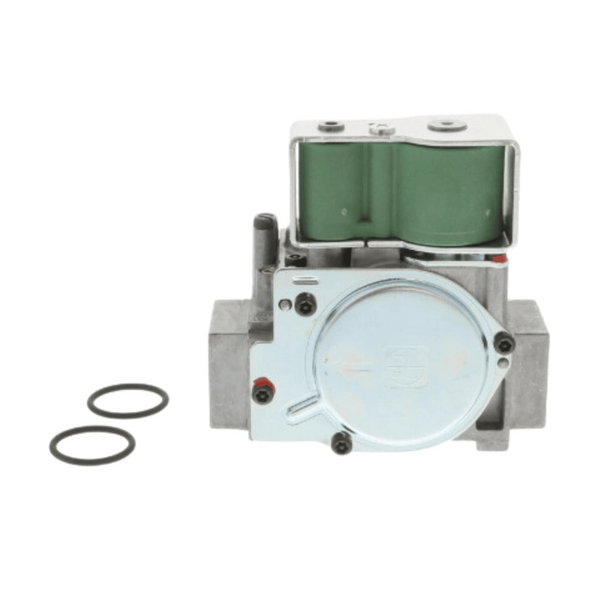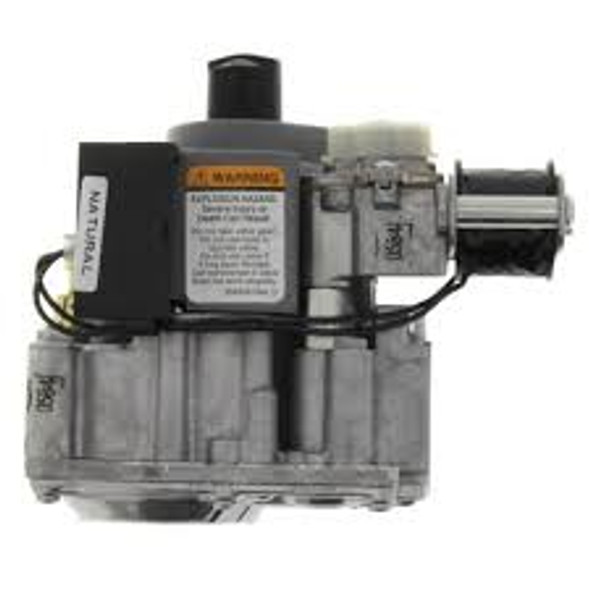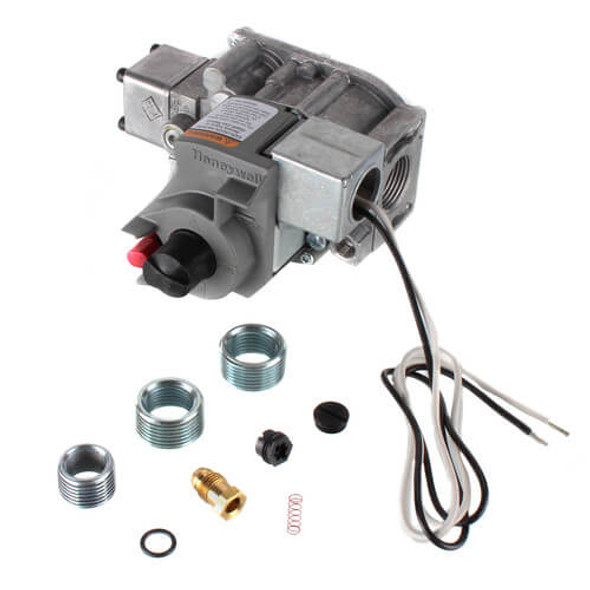Gas Valves
- Product
- Qty in Cart
- Quantity
- Price
- Subtotal
-


RBI Boiler 62632024 Gas Valve 120v
Rbi Boiler
RBI Boiler 62632024 Gas Valve 120v FurnacePartSource.com Commitment Always Brand-New Genuine Parts In stock parts ship Same Business Day when ordered by 5PM ET No Minimum Order Requirements unless noted aboveQty in Cart: 0Price:Subtotal: -


Maxon 125SMA11AA11BB22A0 GAS VALVE
Maxon
MSRP: $5,325.41Now: $4,115.09Maxon 125SMA11AA11BB22A0 GAS VALVE 1 1/4" ANSI Threaded Standard Port Flow Capacity Auto-reset 2 Way Normally Closed General Purpose Buna Body O-rings and Bumper Cast Iron Body Internal Trim Package 1 115Vac 60Hz Solenoid Voltage 115Vac 60Hz...MSRP: $5,325.41Now: $4,115.09 -


Bradford White 265-40148-01 Natural Gas Valve
Bradford White
MSRP: $426.64Now: $323.21Bradford White 265-40148-01 Natural Gas Valve FurnacePartSource.com Commitment Always Brand-New Genuine Parts In stock parts ship Same Business Day when ordered by 5PM ET No Minimum Order Requirements unless noted...MSRP: $426.64Now: $323.21 -


Robertshaw 700-506 Gas Valve 3/4"Millivolt 3.5"WC
Robertshaw
MSRP: $200.64Now: $155.04Robertshaw 700-506 Gas Valve 3/4"Millivolt 3.5"WC FurnacePartSource.com Commitment Always Brand-New Genuine Parts In stock parts ship Same Business Day when ordered by 5PM ET No Minimum Order Requirements unless noted aboveMSRP: $200.64Now: $155.04 -


Modine 5H0731000002 Gas Valve 24v 3.5" wc 1/2"x3/4"
Modine
MSRP: $783.30Now: $605.28Modine 5H0731000002 Gas Valve 24v 3.5" wc 1/2"x3/4" FurnacePartSource.com Commitment Always Brand-New Genuine Parts In stock parts ship Same Business Day when ordered by 5PM ET No Minimum Order Requirements unless noted aboveMSRP: $783.30Now: $605.28 -


Maxitrol M520H-1/2 Modulating Gas Valve for Atmospheric Burners
Maxitrol
MSRP: $366.86Now: $277.93Maxitrol M520H-1/2 Modulating Gas Valve for Atmospheric Burners 1/2" NPT 1/2 PSI Inlet Pressure Max for LP Gas Applications Order in multiples of: 25 FurnacePartSource.com Commitment Always Brand-New Genuine Parts In stock parts ship Same...MSRP: $366.86Now: $277.93 -


Lochinvar & A.O. Smith 100112336 Natural Gas Valve 1/2" 5"WC
Lochinvar & A.O. Smith
MSRP: $363.13Now: $280.60Lochinvar & A.O. Smith 100112336 Natural Gas Valve 1/2" 5"WC FurnacePartSource.com Commitment Always Brand-New Genuine Parts In stock parts ship Same Business Day when ordered by 5PM ET No Minimum Order Requirements unless noted...MSRP: $363.13Now: $280.60 -


Asco 8040G123C0400F3 Gas Shutoff Valve 3/4" 2# 12vdc Wtrtight
Asco
MSRP: $279.99Now: $216.35Asco 8040G123C0400F3 Gas Shutoff Valve 3/4" 2# 12vdc Wtrtight FurnacePartSource.com Commitment Always Brand-New Genuine Parts In stock parts ship Same Business Day when ordered by 5PM ET No Minimum Order Requirements unless noted...MSRP: $279.99Now: $216.35 -

Laars Heating Systems # R0407700 Gas Valve
Laars Heating Systems
MSRP: $529.25Now: $408.97Laars Heating Systems # R0407700 Gas Valve FurnacePartSource.com Commitment Item Typically Ships Within the Same Business Day Brand-New Genuine Parts - Everytime No Minimum Order RequirementsMSRP: $529.25Now: $408.97 -


Amana-Goodman B1282628S (Replaces 0151M00013S) Gas Valve
Amana-Goodman
MSRP: $109.21Now: $84.39Amana-Goodman B1282628S (Replaces 0151M00013S) Gas Valve 24v 3.5"WC This is the Direct Replacement for 0151M00013S FurnacePartSource.com Commitment Always Brand-New Genuine Parts In stock parts ship Same Business Day when...MSRP: $109.21Now: $84.39 -

Emerson White Rodgers # 36J22-214 1/2" 24v FastOpen NatLP GasVlv
Copeland Comfort Control (White Rodgers)
MSRP: $132.54Now: $102.42Emerson White Rodgers # 36J22-214 1/2" 24v FastOpen NatLP GasVlv FurnacePartSource.com Commitment Item Typically Ships Within the Same Business Day Brand-New Genuine Parts – Every time No Minimum Order RequirementsMSRP: $132.54Now: $102.42 -
Honeywell VR8305Q4195 2 Stg Gas Valve 24v, Heatco
Resideo
MSRP: $436.57Now: $337.35Honeywell VR8305Q4195 2 Stg Gas Valve 24v, Heatco FurnacePartSource.com Commitment Item Typically Ships Within the Same Business Day Brand-New Genuine Parts - Everytime No Minimum Order RequirementsMSRP: $436.57Now: $337.35 -

Lennox 73W17 24v 3.5" wc Nat 1/2" Gas Valve
Lennox
MSRP: $177.77Now: $137.37Lennox 73W17 24v 3.5" wc Nat 1/2" Gas Valve FurnacePartSource.com Commitment Item Typically Ships Within the Same Business Day Brand-New Genuine Parts - Everytime No Minimum Order RequirementsMSRP: $177.77Now: $137.37 -

Honeywell V8295S1006 3/4"N/O 24V SOL.VLV,2# MAX
Honeywell
Honeywell V8295S1006 3/4"N/O 24V SOL.VLV,2# MAX FurnacePartSource.com Commitment Item Typically Ships Within the Same Business Day Brand-New Genuine Parts - EverytimeNo Minimum Order RequirementsQty in Cart: 0Price:Subtotal: -


Lochinvar & A.O. Smith 100187876 Natural & LP Gas Valve Assembly
Lochinvar & A.O. Smith
MSRP: $1,572.76Now: $1,215.32Lochinvar & A.O. Smith 100187876 Natural & LP Gas Valve Assembly FurnacePartSource.com Commitment Always Brand-New Genuine Parts In stock parts ship Same Business Day when ordered by 5PM ET No Minimum Order Requirements unless...MSRP: $1,572.76Now: $1,215.32 -


Lochinvar & A.O. Smith 100110218 (Updated Version of 9005017205) 24v 3.5" wc Nat 1" Gas Valve
Lochinvar & A.O. Smith
MSRP: $1,013.74Now: $783.35Lochinvar & A.O. Smith 100110218 24v 3.5" wc Nat 1" Gas Valve This is the Updated Version for 9005017205 FurnacePartSource.com Commitment Item Typically Ships Within the Same Business Day Brand-New Genuine Parts - Every Time No Minimum...MSRP: $1,013.74Now: $783.35 -

Honeywell #VR4300A4502 Gas Valve
Resideo
MSRP: $465.43Now: $359.65Description 3/4" 120vac standing pilot dual automatic combination valve, 3.5" water column, standard opening, single stage, straight through with flange, 30000 btu to 300000 btu max, 1/2# pressure rating, 1/8" npt pressure tap with plug, includes...MSRP: $465.43Now: $359.65 -

Modine 5H0750250000 (Replaces 5H75025) 1/2" Natural Gas Valve
Modine
MSRP: $1,333.07Now: $1,030.10Modine 5H0750250000 (Replaces 5H75025) 1/2" Natural Gas Valve 1/2" 24V 3.5" Wc This is the Updated Version of 5H75025 FurnacePartSource.com Commitment Always Brand-New Genuine Parts In stock parts ship Same Business Day...MSRP: $1,333.07Now: $1,030.10 -


Honeywell V4730C1006-0000 Servo Regulated Gas Valve
Honeywell
MSRP: $1,621.88Now: $1,253.27Honeywell V4730C1006-0000 Servo Regulated Gas Valve Gas/Air 1/2" Straight Flange 120 Vac 1/8" Pressure Tappings at Inlet and Outlet Flanges Includes Mesh Screen Filter and Flange Kit (Kit Includes 1 Pipe Adapter, 1 O Ring, 4 Mounting Screws, 1 DIN...MSRP: $1,621.88Now: $1,253.27 -

Laars # V0079400 Gas Valve
Laars Heating Systems
MSRP: $198.15Now: $153.11Combination Natural Gas ValveMSRP: $198.15Now: $153.11

